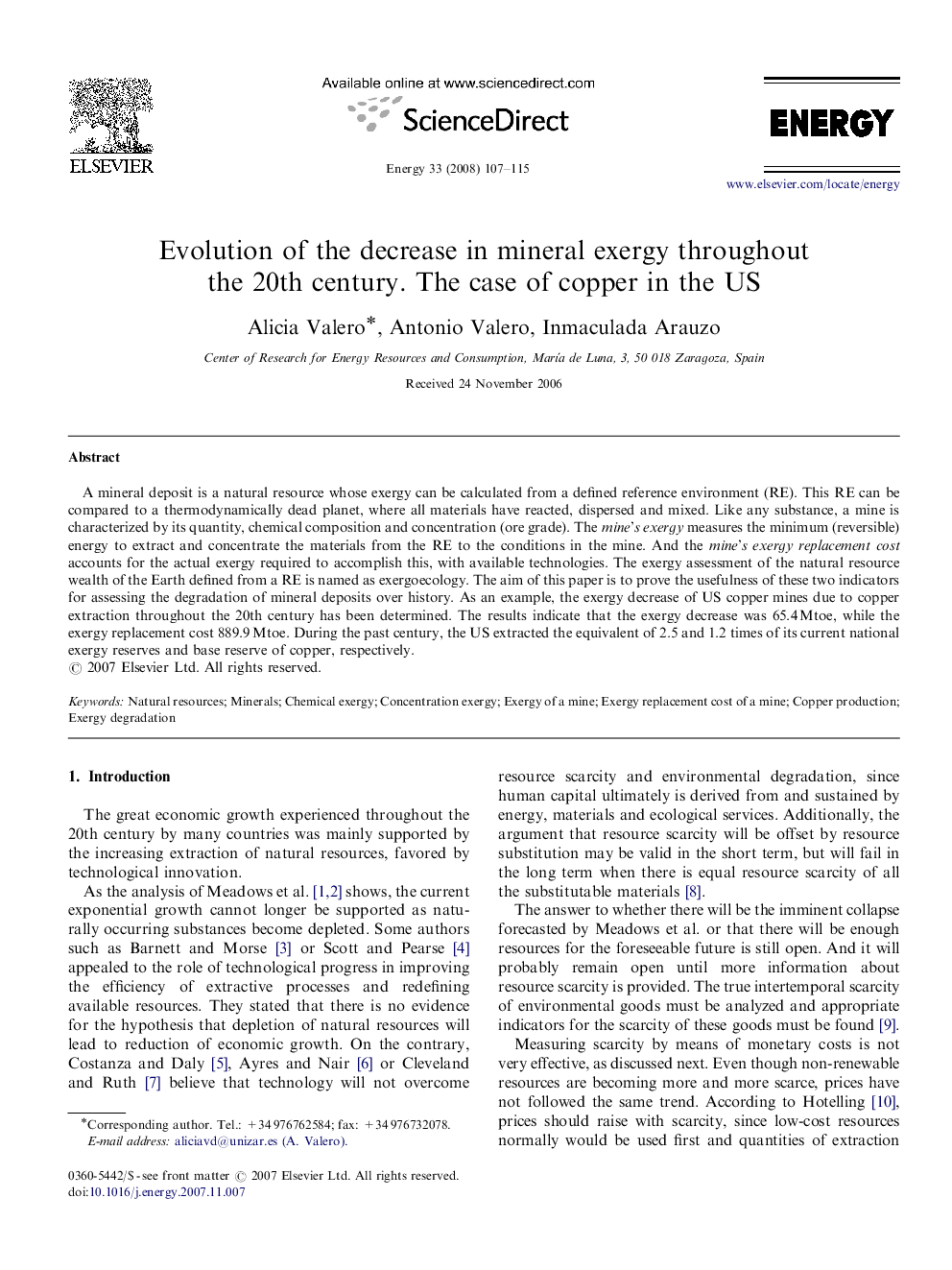| Article ID | Journal | Published Year | Pages | File Type |
|---|---|---|---|---|
| 1736245 | Energy | 2008 | 9 Pages |
A mineral deposit is a natural resource whose exergy can be calculated from a defined reference environment (RE). This RE can be compared to a thermodynamically dead planet, where all materials have reacted, dispersed and mixed. Like any substance, a mine is characterized by its quantity, chemical composition and concentration (ore grade). The mine’s exergy measures the minimum (reversible) energy to extract and concentrate the materials from the RE to the conditions in the mine. And the mine’s exergy replacement cost accounts for the actual exergy required to accomplish this, with available technologies. The exergy assessment of the natural resource wealth of the Earth defined from a RE is named as exergoecology. The aim of this paper is to prove the usefulness of these two indicators for assessing the degradation of mineral deposits over history. As an example, the exergy decrease of US copper mines due to copper extraction throughout the 20th century has been determined. The results indicate that the exergy decrease was 65.4 Mtoe, while the exergy replacement cost 889.9 Mtoe. During the past century, the US extracted the equivalent of 2.5 and 1.2 times of its current national exergy reserves and base reserve of copper, respectively.
